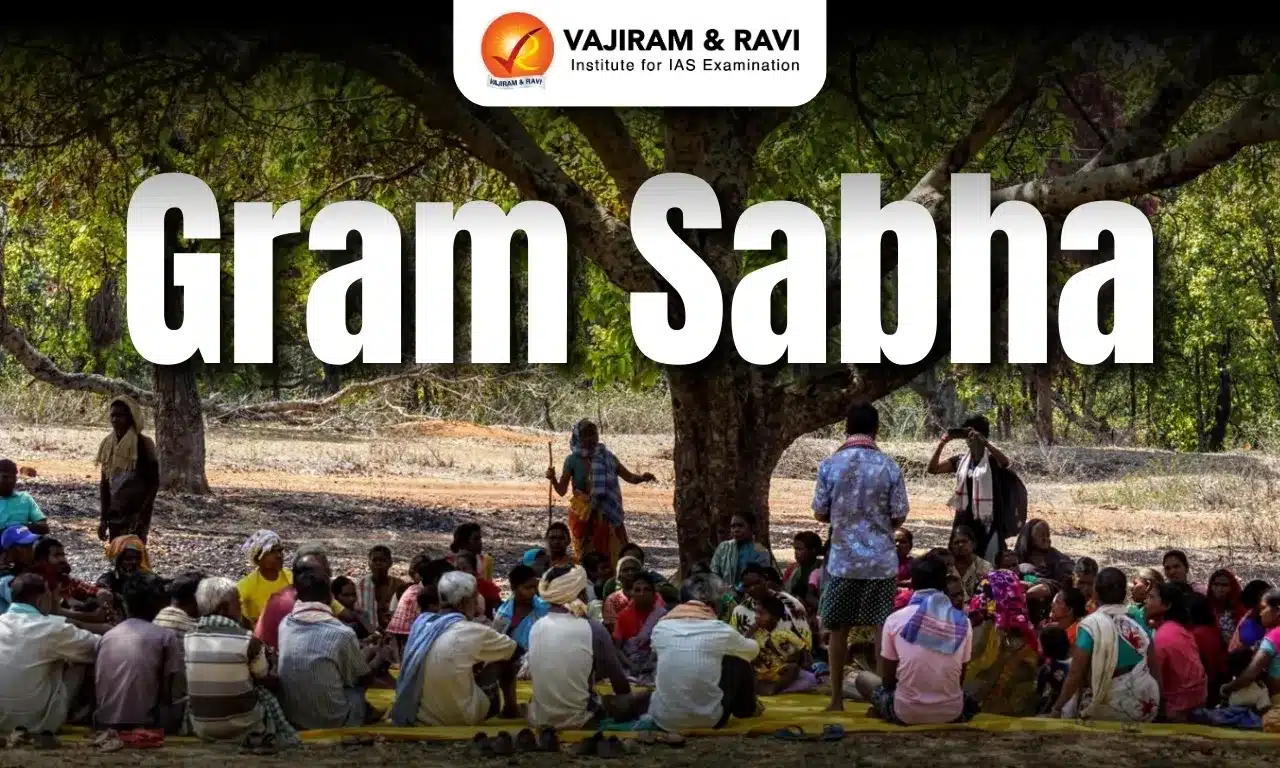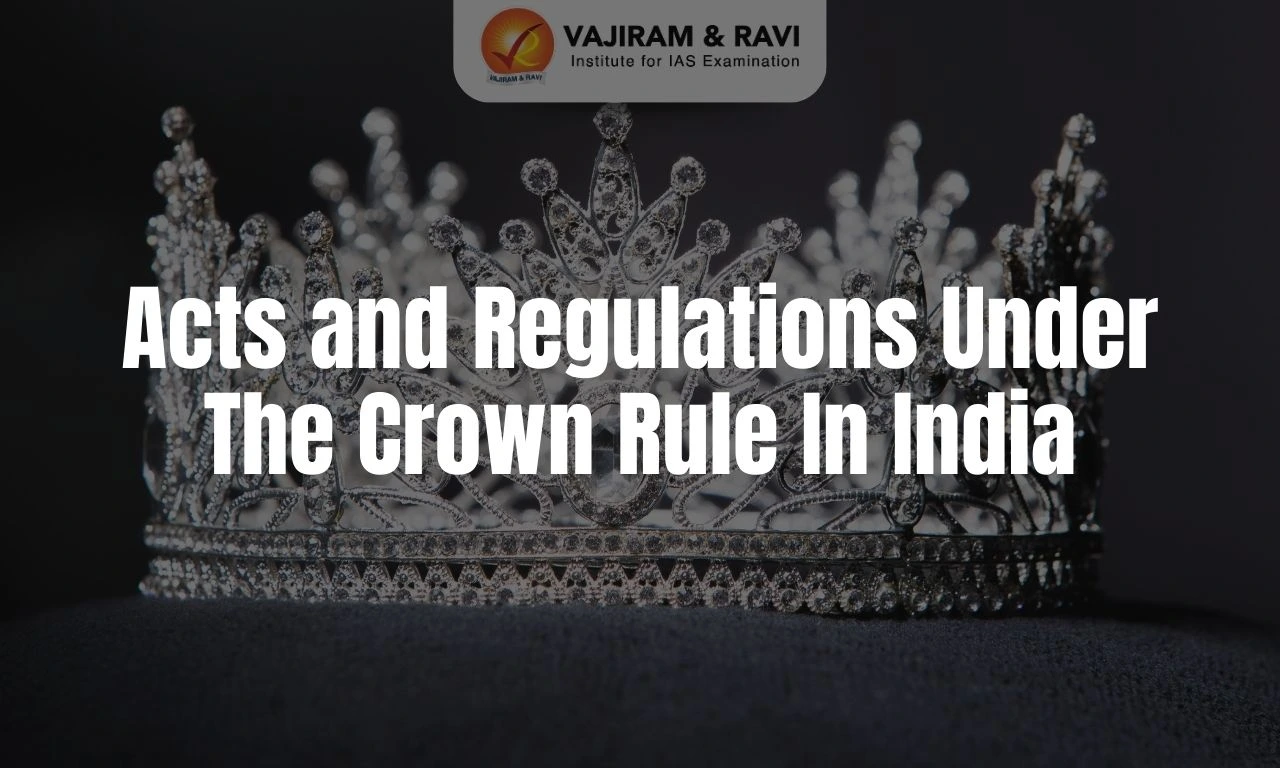Gram Sabha is a crucial part of the Panchayati Raj system in India, designed to promote direct democracy at the grassroots level. It includes all registered voters within a Gram Panchayat's jurisdiction, providing a platform for community-based governance.
The Panchayat, the village's executive body, implements development plans and initiatives, with all decisions subject to Gram Sabha approval, ensuring transparency and inclusivity. Active Gram Sabha participation fosters accountability and allows citizens to engage directly in governance and public welfare decisions.
Gram Sabha Overview
The Gram Sabha is the general assembly of all registered voters in a village, ensuring direct participation in local governance. It oversees and approves the Gram Panchayat's budget, audits, and development plans, promoting transparency, accountability, and community welfare, while empowering villagers in decision-making processes.
Gram Sabha Constitutional Provisions
The Gram Sabha, defined under Article 243(b) in Part IX of the Indian Constitution, is the cornerstone of the Panchayati Raj system, enabling participatory democracy at the grassroots. Key Provisions of Gram Sabha as follows:
- Definition: Article 243(b) defines the Gram Sabha as a body of registered voters in a village under a Panchayat’s jurisdiction.
- Inclusivity: Unlike elected bodies like Gram Panchayats or Zilla Parishads, the Gram Sabha directly comprises all eligible voters.
- Legal Framework: Introduced through the 73rd Constitutional Amendment Act, 1992, which institutionalized participatory governance.
- Role: Acts as a permanent body to discuss and decide on village governance, resource management, and developmental plans.
- Democratic Shift: Represents a transition from representative democracy to participatory democracy, empowering citizens directly in decision-making processes.
Gram Sabha Compositions
The Gram Sabha promotes social inclusion by ensuring equal participation in local decision-making for all villagers. It is organized by the Panchayat Secretary in coordination with the Sarpanch.
- A meeting must be convened by the Sarpanch if at least 10% of members or 50 members (whichever is greater) request it.
- Members must inform the Sarpanch of the meeting's purpose and submit a formal request at least five office days before the date.
- If the Sarpanch fails to organize the meeting, members can independently proceed.
Gram Sabha Meetings
Gram Sabha must convene meetings at least two to four times annually, as per the State Panchayat Raj Acts. To facilitate this, most states designate four national and international days as reference dates, thus meetings of Gram Sabha can be held on:
- Republic Day (26th January), Labour Day (1st May), Independence Day (15th August), Mahatma Gandhi Jayanti (2nd October)
- However, Gram Panchayats have the flexibility to hold meetings on other dates that suit their convenience.
- Presiding Officer of Meeting: Each Gram Sabha meeting is chaired by the Mukhia (Pradhan) of the relevant Gram Panchayat, or in their absence, by the Up-Mukhia (Up-Pradhan).
- However, if both are absent, the meeting will be chaired by a member of Gram Sabha elected by the majority of those present.
Gram Sabha Organisation
Gram Sabha helps promote social inclusion by giving all members of the village, regardless of status, an equal voice in local decision-making. The Gram Sabha is organized by the Panchayat Secretary in coordination with the Sarpanch. The Gram Sabha is held when:
- At least 10% of the members or 50 members, whichever is greater, request a meeting, the Sarpanch must convene it.
- Furthermore, the members must inform the Sarpanch of the meeting's purpose.
- A formal request to hold the meeting must be submitted to the Sarpanch at least five office days before the meeting date.
- If the Sarpanch fails to organize the meeting, the members may proceed with it independently.
Gram Sabha Functions
Article 249A in Part IX of the Indian Constitution empowers the Gram Sabha to exercise authority and fulfil responsibilities at the village level as outlined by state legislation. The Gram Sabha functions to ensure the socio-economic development of the village by identifying schemes, setting priorities, and approving annual plans in coordination with the Gram Panchayat. The following are the key functions of Gram Sabha:
- Planning and Development: Approves village development plans and monitors resource use.
- Budget and Financial Oversight: Reviews and approves the budget, audits, and fund allocation, including selecting beneficiaries for welfare programs.
- Resource Management: Oversees natural resources and public infrastructure like roads, wells, and sanitation.
- Forest Rights: Defines individual and community forest rights under relevant laws.
- Community Welfare: Promotes social initiatives, raises awareness, and addresses social challenges.
- Support for Vulnerable Groups: Maintains vital records, assists government surveys, and supports disadvantaged communities.
- Accountability: Monitors the Gram Panchayat, ensuring transparency and efficiency.
- Dispute Resolution: Addresses minor disputes and grievances.
- Welfare Programs: Ensures fair implementation of government schemes.
Gram Sabha Challenges
Gram Sabha functions as a village-level democratic institution that enables citizens to raise local issues and work collectively toward solutions. It strengthens participatory governance within the Panchayat’s representative framework. Despite being key to decentralized governance, Gram Sabha in India faces numerous challenges.
- Irregular Meetings: Meetings of the Gram Sabha are often conducted infrequently, limiting their effectiveness. In many cases, these meetings are held only to meet formal requirements.
- Lack of Participation of Women: The low attendance in Gram Sabha meetings, particularly among women, limits their effective representation in the provision of local public goods.
- Challenges in Decision Implementation: Decisions made during Gram Sabha meetings are often ignored or disregarded by local authorities, resulting in a lack of implementation.
- This neglect leads to growing frustration among community members.
- Lacking Awareness: Additionally, there is a significant lack of awareness among the general public, as well as Panchayat members (Sarpanch/ Pradhan), about the powers and responsibilities of the Gram Sabha.
- Lack of Formal Recognition: Except for a few, most state governments do not grant formal recognition to the Gram Sabha in their legislation, leaving it as a consultative and advisory body.
- Ambiguity in the Role and Functions: Furthermore, many state acts fail to clearly define the role of the Gram Sabha or establish procedures and penalties for its functioning, as noted in the Manishankar Iyer Committee Report.
Gram Sabha Significance
Gram Sabha provides a suitable platform for implementing flagship government programs. The significance of Gram Sabha in the village lies in its ability to bring governance directly to the people.
- Promotes Participatory Democracy: Enables villagers to directly participate in decision-making and governance at the grassroots level.
- Ensures Transparency: Reviews and approves the Gram Panchayat’s budget and audit reports, ensuring financial transparency.
- Empowers Communities: Provides a platform for voicing concerns, addressing local issues, and ensuring community welfare.
- Checks Accountability: Monitors the work of the Gram Panchayat, holding it accountable for its actions and resources.
- Strengthens Local Governance: Fosters a decentralized approach to governance, enhancing self-governance and local development.
- Dispute Resolution: Plays a role in resolving minor local disputes and conflicts.
- Social Inclusion: Gives all eligible voters an equal voice in decision-making, promoting social inclusion and unity.
Difference between Gram Sabha and Gram Panchayat
The Gram Sabha includes all village voters for direct governance, while the Gram Panchayat is the village’s executive body. The 73rd Amendment empowers Panchayats Raj Institutions for self-governance under Article 40. The following are key differences between Gram Sabha and Gram Panchayat:
|
Parameters |
Gram Sabha |
Gram Panchayat |
|
Term and Structure |
- Gram Sabha is a permanent body that consists of all registered voters in the village. - Members of the Gram Sabha are not elected. |
- Gram Panchayat is a temporary body, as its members are elected for a five-year term. - It includes ward members and the Sarpanch, and its members are directly elected by the Gram Sabha. |
|
Meeting Frequency |
- Gram Sabha's meetings are convened as needed. (atleast twice in a year) |
- Gram Panchayat holds regular meetings. |
|
Decision - Making |
- The decisions of the Gram Sabha are final and can only be altered by the Gram Sabha itself. |
- Decisions by the Gram Panchayat can be guided by the Gram Sabha |
|
Function |
- The Gram Sabha oversees and approves the annual budget and audit reports of the Gram Panchayat. |
- Gram Panchayat is the executive body responsible for implementing village development. |
Gram Sabha UPSC PYQs
Question1. Under the Scheduled Tribes and Other Traditional Forest Dwellers (Recognition of Forest Rights) Act, 2006, who shall be the authority to initiate the process for determining the nature and extent of individual or community forest rights or both? (UPSC Prelims 2013)
(a) State Forest Department
(b) District Collector/Deputy Commissioner
(c) Tahsildar/Block Development Officer/Mandal Revenue Officer
(d) Gram Sabha
Ans. (d)
Last updated on December, 2025
→ Check out the latest UPSC Syllabus 2026 here.
→ Join Vajiram & Ravi’s Interview Guidance Programme for expert help to crack your final UPSC stage.
→ UPSC Mains Result 2025 is now out.
→ UPSC Notification 2026 is scheduled to be released on January 14, 2026.
→ UPSC Calendar 2026 is released on 15th May, 2025.
→ The UPSC Vacancy 2025 were released 1129, out of which 979 were for UPSC CSE and remaining 150 are for UPSC IFoS.
→ UPSC Prelims 2026 will be conducted on 24th May, 2026 & UPSC Mains 2026 will be conducted on 21st August 2026.
→ The UPSC Selection Process is of 3 stages-Prelims, Mains and Interview.
→ UPSC Result 2024 is released with latest UPSC Marksheet 2024. Check Now!
→ UPSC Prelims Result 2025 is out now for the CSE held on 25 May 2025.
→ UPSC Toppers List 2024 is released now. Shakti Dubey is UPSC AIR 1 2024 Topper.
→ UPSC Prelims Question Paper 2025 and Unofficial Prelims Answer Key 2025 are available now.
→ UPSC Mains Question Paper 2025 is out for Essay, GS 1, 2, 3 & GS 4.
→ UPSC Mains Indian Language Question Paper 2025 is now out.
→ UPSC Mains Optional Question Paper 2025 is now out.
→ Also check Best IAS Coaching in Delhi
Gram Sabha FAQs
Q1. What is meant by Gram Sabha?+
Q2. Who forms Gram Sabha?+
Q3. How many times does Gram Sabha meet in a year?+
Q4. Who was the head of Gram Sabha?+
Q5. How many times does Grama Sabha meet in a year?+
Tags: gram sabha quest UPSC Polity Notes

















